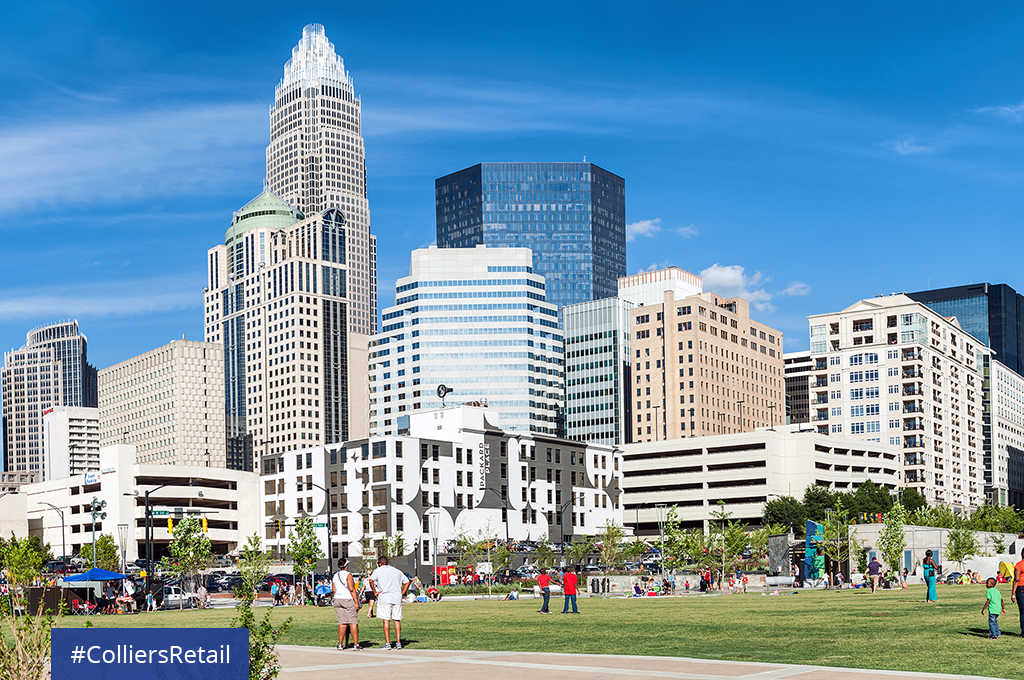Five Key Stats
- The U.S. population experienced a 7.35% growth in the last decade and is currently 334,653,901.
- The mass migration of tech workers from San Francisco, Boston, and Chicago contributed to population growth in Austin, Nashville, Charlotte, and Jacksonville.
- Austin is the fastest-growing city, experiencing a 33.7% increase in population in the last decade.
- Jacksonville, the 12th largest city in the U.S., is the most populous city in Florida, with about 911,507 residents.
- It’s not just about cities: 162 rural counties increased a 13% collective percentage growth in the last decade as retirees sought locations close to nature, with moderate climates and low taxes.
People motivated by the pandemic prioritized quality-of-life (and cost-of-living) considerations and initiated migration from larger urban areas. The shift has boosted many cities located in the south and west regions of the U.S. into top-ranking commercial real estate markets. In compiling our top list of emergent cities, we factored in population and job market growth and those that have shown resilient economic stability over the last few years. We take a closer look at Jacksonville, FL, Raleigh, NC and Tampa, FL, including Austin, TX, and Charlotte, NC, two of our top picks in 2021, that continue to benefit from the country’s economic growth post-pandemic.
AUSTIN, TX
The nation’s fastest-growing city, Austin boasts several tech hubs, including Dell, 3M, Tesla, and satellite offices for Apple. Over the last two years, Austin has added more than 80,000 jobs, according to the Texas Workforce Commission and U.S. Bureau of Labor Statistics, and those folks are swiping into Austin offices more frequently, with 59% of office space occupied as of this month. The influx of workers has driven a 38% rent gain for housing and increased demand for prime retail real estate–Hermes opened a 7,600-square-foot store on South Congress Avenue in Austin, joining Nike and Lululemon in targeting the new affluent shopper. Commercial leasing rates are soon to follow.
CHARLOTTE, NC
Ranked as the #14 best city to live in the U.S., this charming Southern city has come into its own. The Charlottean lifestyle comprises a hybrid of live/work/play, enticing young adults and companies like British startup Arrival, an electric vehicle manufacturer, and home improvement retailer Lowe’s. Lowe’s chose the South End, a hip neighborhood just south of the central business district in Uptown Charlotte, as the home base for its new Global Technology Center. “The development commitment in Charlotte has brought substantial residential and office site projects with ground-floor retail opportunities. As a result, we have seen an influx of new businesses–bars, breweries, restaurants, and entertainment venues, reinvigorating the local economy,” – Steve Rich, Senior Director, Retail Services, Charlotte.
JACKSONVILLE, FL
The 12th largest city in the U.S., Jacksonville is the most populous city in Florida, with about 911,507 residents. Established as a business and shipping city, Jacksonville’s demographic skews young, with more than 95,000 millennials and a five-year growth rate of 4 percent. In addition, the metropolitan area boasts one of the highest median income levels in Florida, particularly around the affluent St. Johns County region in the southeast portion of the region. These favorable economic trends continue to lift personal consumption and retail demand. “Outside investors are seeing the retail potential in Jacksonville and finally executing on development and redevelopment opportunities that will transform significant parts of the market. Our population density is increasing fast, so we look forward to the continued growth of retail projects in North Florida.” – Katy Figg, Senior Director, Retail Services, Northeast Florida.
RALEIGH, NC
Raleigh has experienced exponential migration growth over the last few years as it’s fast becoming the “center of the country’s emerging, clean energy economy.” For example, VinFast, a Vietnamese electric vehicle manufacturer, committed to investing $5 billion into Triangle Innovation Point, right outside of Raleigh, for its first North American assembly plant, which at completion will employ 13,000 workers. In addition, workforce growth has attracted interest in the Triangle from commercial developers, with 144,410 SF of new office space under construction and approximately 1.7 million SF of additional office space planned or proposed in the downtown market, according to the Downtown Raleigh Q1 2022 Market Report.
TAMPA, FL
Tampa is one of the fastest-growing cities with the #1 hottest housing market. Job growth driven by tech, cyber security, and finance draws a diverse, affluent demographic to the city. The weather, low taxes and affordability continue to attract residents from the northeast and more expensive cities like San Francisco, LA, Denver and Chicago. Dynamic mixed-use developments such as Water Street Tampa, Midtown and The Heights are changing the landscape in Tampa with large-scale developments adding millions of square feet of luxury apartments, office space, and new to market retail and dining options. – Lisa McCaffrey, Executive Managing Director, Retail Services Tampa
To learn more about these CRE influencers, visit us at colliers.com.

 Anjee Solanki
Anjee Solanki

 Aaron Jodka
Aaron Jodka Nicole Larson
Nicole Larson
